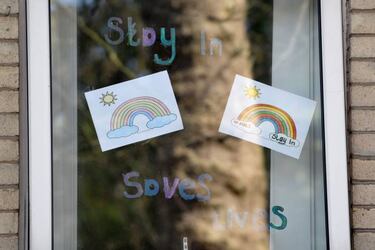UK care home worker reveals extent of PPE & testing shortages
"Some care home residents need to be admitted to hospital fairly frequently, making them more likely to come into contact with the virus," but AS told that they are not tested.


There are currently over 20,000 care homes across the UK. Many are owned by private companies; some by voluntary organisations and charities; while local authorities and NHS Trusts are responsible for the rest.
**Follow all the latest news related to the coronavirus pandemic**
Care home Covid-19 concerns in UK
The ownership of these vital facilities is extremely fragmented. HC-One and MHA are two of the UK’s largest care home providers, yet between them they operate just 3% of England’s care homes. With staff and residents increasingly likely to be exposed to coronavirus a joined-up approach is vital to save lives.
One member of care home staff, who asked to remain anonymous, spoke to AS English about the growing strain on the care system. Without a cohesive plan to tackle the outbreak, they fear both staff and residents will be put to unacceptable risk.
“Our care home was open to everyone, including all visitors until we were told by the government that basically we had to stop letting visitors in.
“We were in lockdown and they were still allowing visitors until they were told that care homes had to stop. Other care homes had stopped letting visitors in a couple of weeks before.”
The NHS cannot provide the personal protection equipment (PPE) that care homes require so providers are forced to act independently to get the kit they so desperately need.

The CEO of Methodist Homes, Sam Monaghan, told the BBC that they had spent £200,000 on masks because they were not confident that the ‘inconsistent and inadequate’ NHS supply chain would get to staff in time. The price charged by a private supplier was five times the normal cost.
This has had a knock-on effect for care home staff. Those life-saving resources are having to be carefully rationed. The care home worker that we spoke to explained the extent of the problem.
“Not every staff member has been given access to masks, they just don’t have enough stock. The only time anyone in the building is wearing a mask is when they go into the few residents that are being barrier nursed.”
Testing not serving its purpose
‘Barrier’ nursing is used for residents who are at an increased risk of contracting coronavirus but have not been tested. Some care home residents need to be admitted to hospital fairly frequently, making them more likely to come into contact with the virus. But until testing is rolled out across care homes, staff are being left in the dark.
“We’re still having residents coming from hospital who may have Covid-19 and they’re not being tested before they come to us, so it is a possibility they may be infected and we wouldn’t know.”

With all these residents having to be barrier nursed for a week due to the lack of testing, the limited number of masks will not stretch far enough to protect the staff going about their daily work.
“The staff are not 2-meter distancing because it’s basically impossible and we don’t have access to masks or have any in stock… with the lack of protective equipment it makes everyone much more vulnerable”.
The staff member that we spoke to lives with and cares for their young child, and without enough PPE the danger to both parent and child is increased.
Related stories
Health Secretary Matt Hancock yesterday promised an increase in social care testing to include all new care home residents who enter the care system from hospitals.
The government has set a target of completing a total of 100,000 tests a day by the end of April, but Dr Clare Wenham, assistant professor of global health policy at LSE, told the BBC that the reality was likely to be "nowhere near" that figure.
